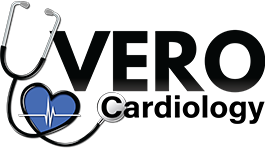Echocardiography
Echocardiography offers invaluable insights into the structure and function of the heart. This technology uses sound waves to generate detailed images of the heart in real-time, providing healthcare professionals with a view of cardiac anatomy and performance.
At the heart of echocardiography is the transducer, a device that emits high-frequency sound waves. These waves penetrate the chest and bounce off the heart's structures, creating echoes that are then converted into detailed images on a computer screen. This dynamic imaging allows for the visualization of the heart's chambers, valves, and blood flow patterns, offering critical information for diagnosing a wide array of cardiac conditions.

One of the advantages of echocardiography is its versatility. It can be employed for routine screenings, diagnostic evaluations, and monitoring of cardiac conditions over time. Transthoracic echocardiography (TTE) is the most common form, performed by placing the transducer on the chest's surface. It provides an overview of the heart's function and structure and is particularly effective for detecting conditions such as heart failure, valve disorders, and congenital heart abnormalities.
For a more detailed assessment or in situations where a clearer image is required, transesophageal echocardiography (TEE) may be employed. In TEE, the transducer is passed through the esophagus, allowing for closer proximity to the heart and superior image quality. TEE is often used during surgical procedures, interventional cardiology, or when a more detailed evaluation is necessary.
Echocardiography is instrumental in diagnosing and managing various cardiac conditions, including heart valve diseases, cardiomyopathies, and pericardial diseases. The real-time imaging capabilities allow healthcare professionals to assess cardiac function, identify abnormalities, and guide treatment decisions effectively. As technology advances, echocardiography continues to evolve, incorporating three-dimensional imaging, strain imaging, and Doppler techniques. Three-dimensional echocardiography provides a more lifelike representation of cardiac structures, strain imaging assesses the deformation of heart muscles, and Doppler imaging evaluates blood flow velocities and directions.
In conclusion, echocardiography stands as an tool in modern cardiology, offering a non-invasive, real-time window into the the heart. With its versatility, accuracy, and continuous advancements, echocardiography plays an important role in the early detection, diagnosis, and management of cardiovascular conditions, ultimately improving patient outcomes.




